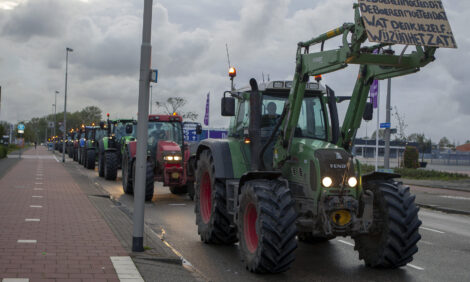



Dairy Effluent Makes Farmers Affluent
AUSTRALIA - Now is the time for Victorian dairy farmers to make their farms more productive and profitable, simply by applying dairy effluent pond sludge onto their pastures, says Victoria's Department of Primary Industries.Department of Primary Industries (DPI) research has confirmed that applying sludge from dairy effluent ponds onto pastures is a sensible economic and environmental choice for farmers - and the investment quickly pays for itself.
Researchers applied sludge at various rates onto pastures at two dairy farms in south west Victoria and compared results to pasture treated with commercial chemical fertiliser. The sludge used in the research was taken from the bottom of the first effluent pond.
They then measured the amount of extra grass grown and calculated the amount of extra milk produced by the different treatments.
The results showed that sludge was at least as effective - and in some cases more effective - than commercial fertiliser in promoting pasture growth.
Senior DPI research scientist Graeme Ward said using sludge as an alternative to commercial fertiliser was also cost effective and presented farmers with a good return on investment.
“There seems to be some widespread farmer concern about the upfront costs involved in hiring a contractor to extract and apply sludge to pastures. However, we found that the cost of sludge application could be paid back within four to five months,” Mr Ward said.
“Our economic analysis showed that every megalitre of sludge applied to pastures gave a return of $14,000 in milk responses and fertiliser savings. This compares very favourably with the cost of chemical fertiliser to get the same milk responses.
“It’s good practice to regularly clean out effluent ponds anyway, so it makes sense to also capitalise on the extra benefits of applying these nutrients back to pasture.”
Mr Ward said pastures treated with one application of sludge also grew back faster and stayed productive for longer when compared to the same application of chemical fertiliser.
“The great thing is, we’re utilising one of the biggest waste products of the industry and turning into profitable gains for farmers,” he said.
Mr Ward said the best time to apply sludge to pasture was around late summer to early autumn at a rate of 50,000 to 100,000 litres per hectare.


